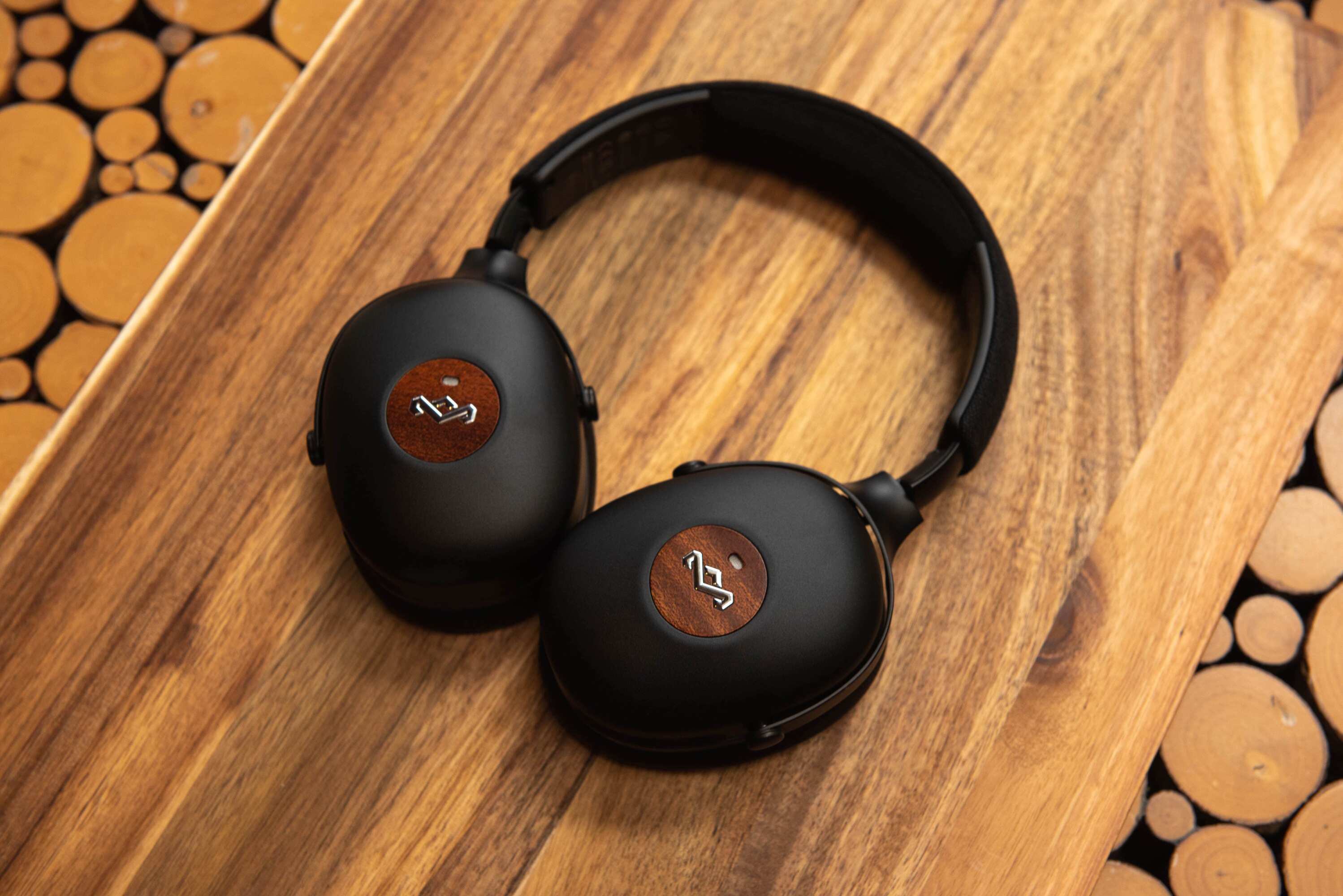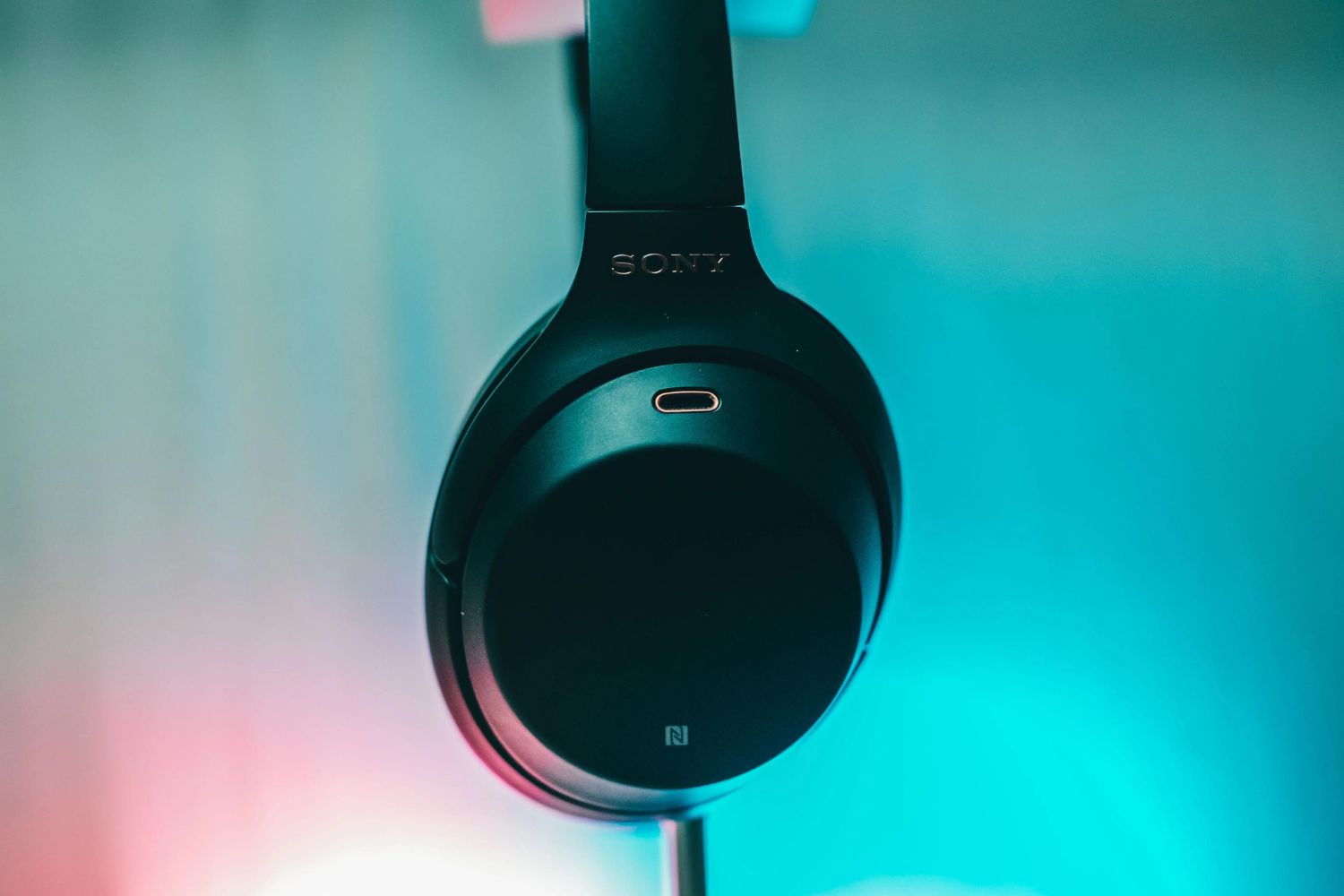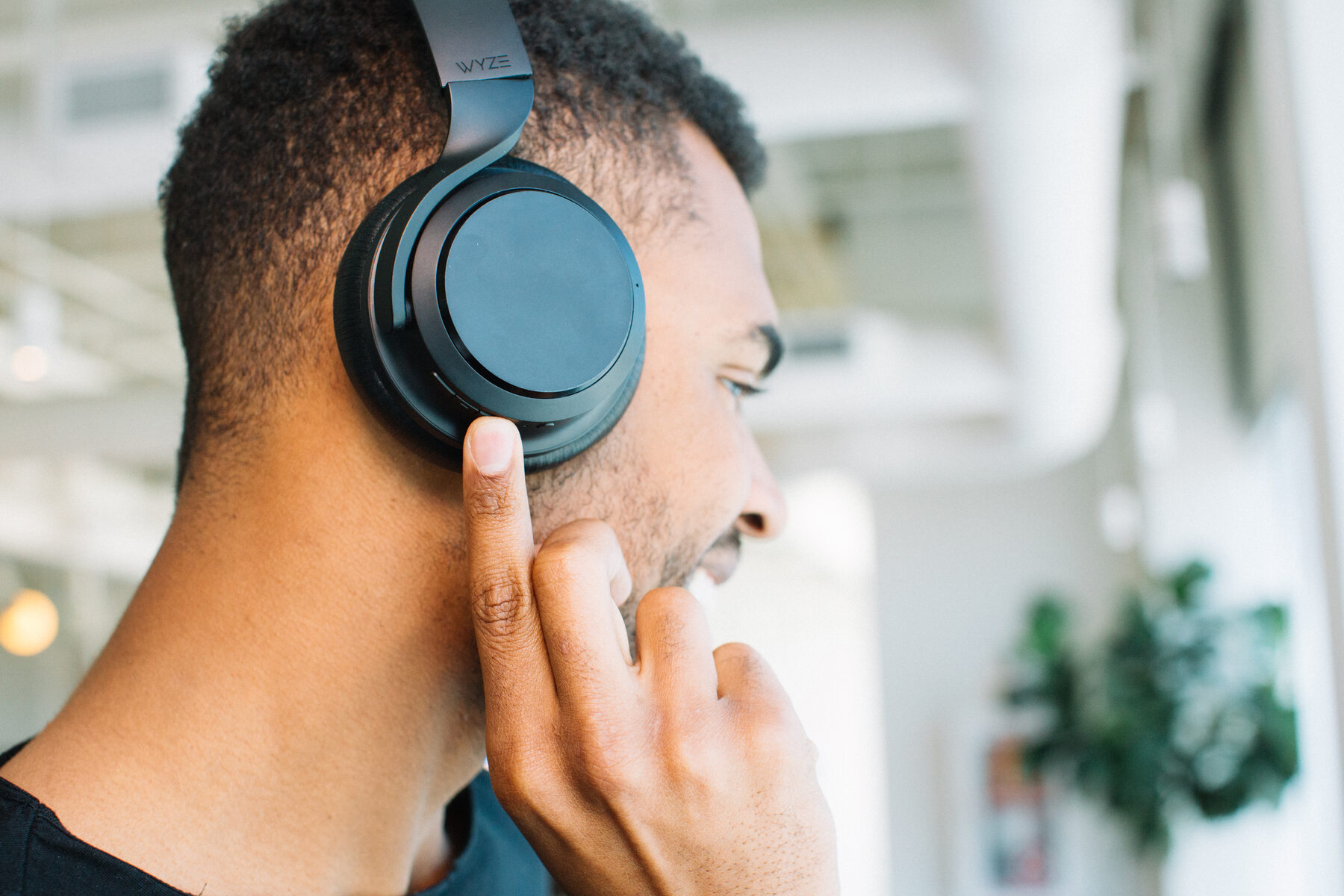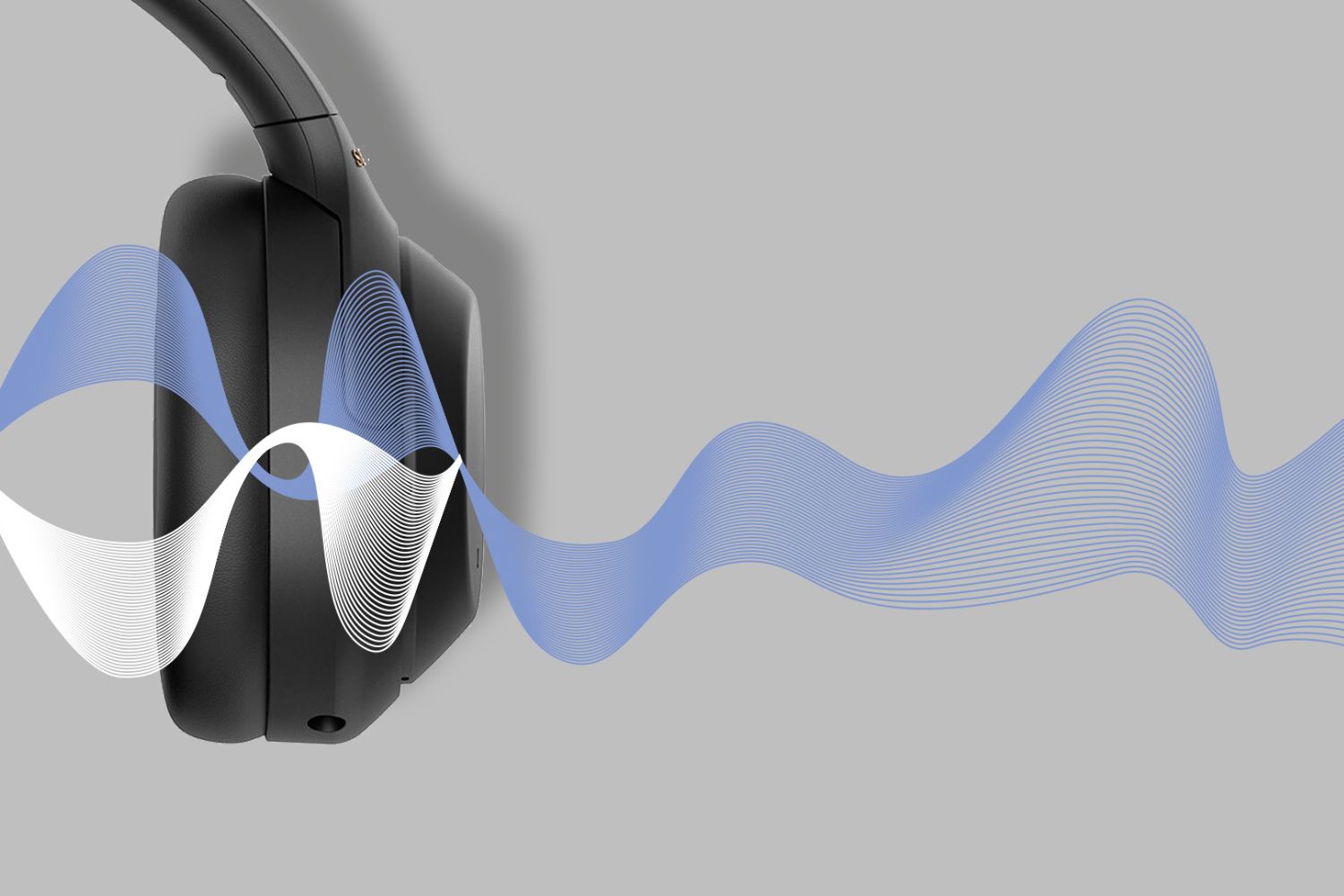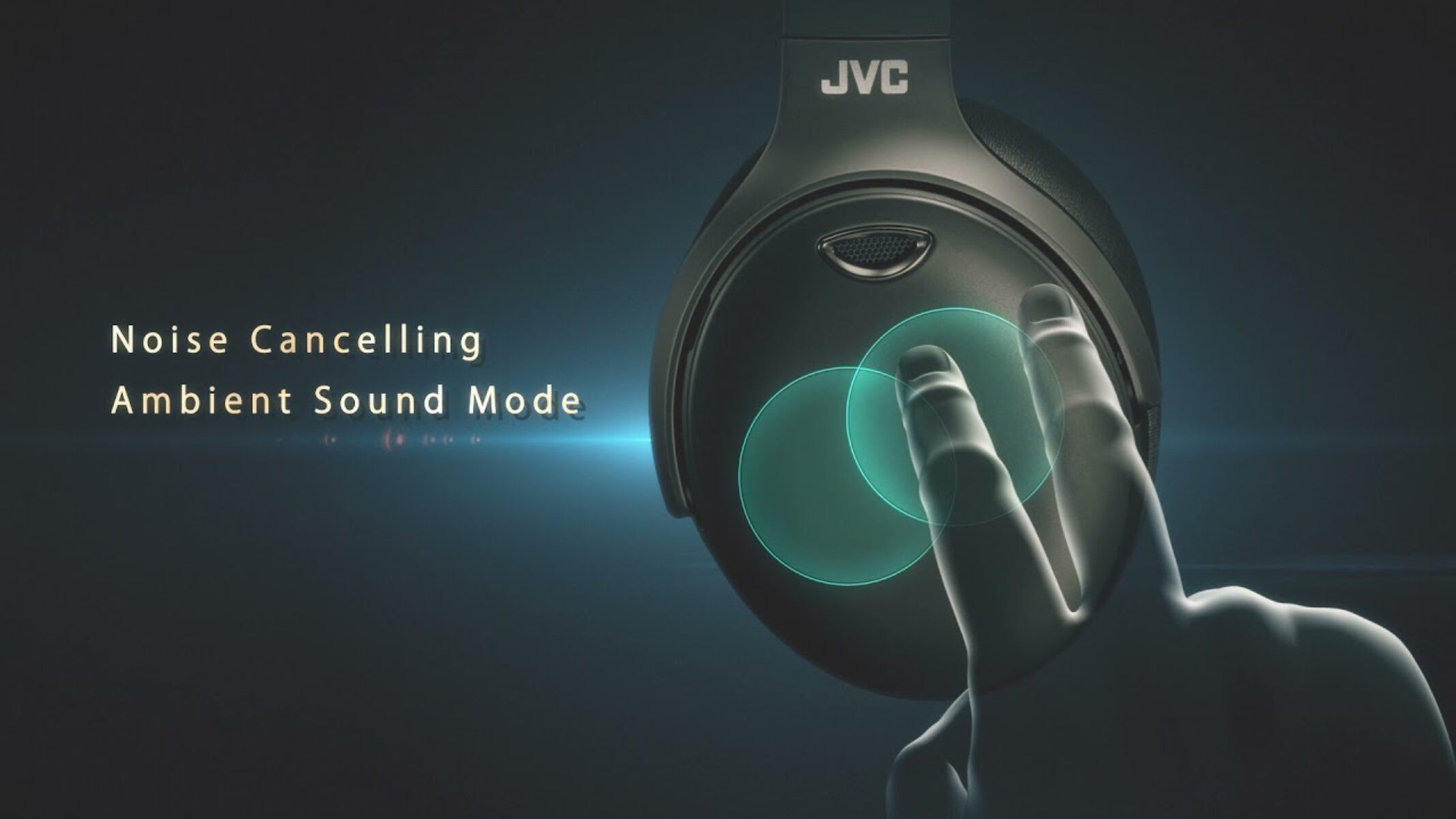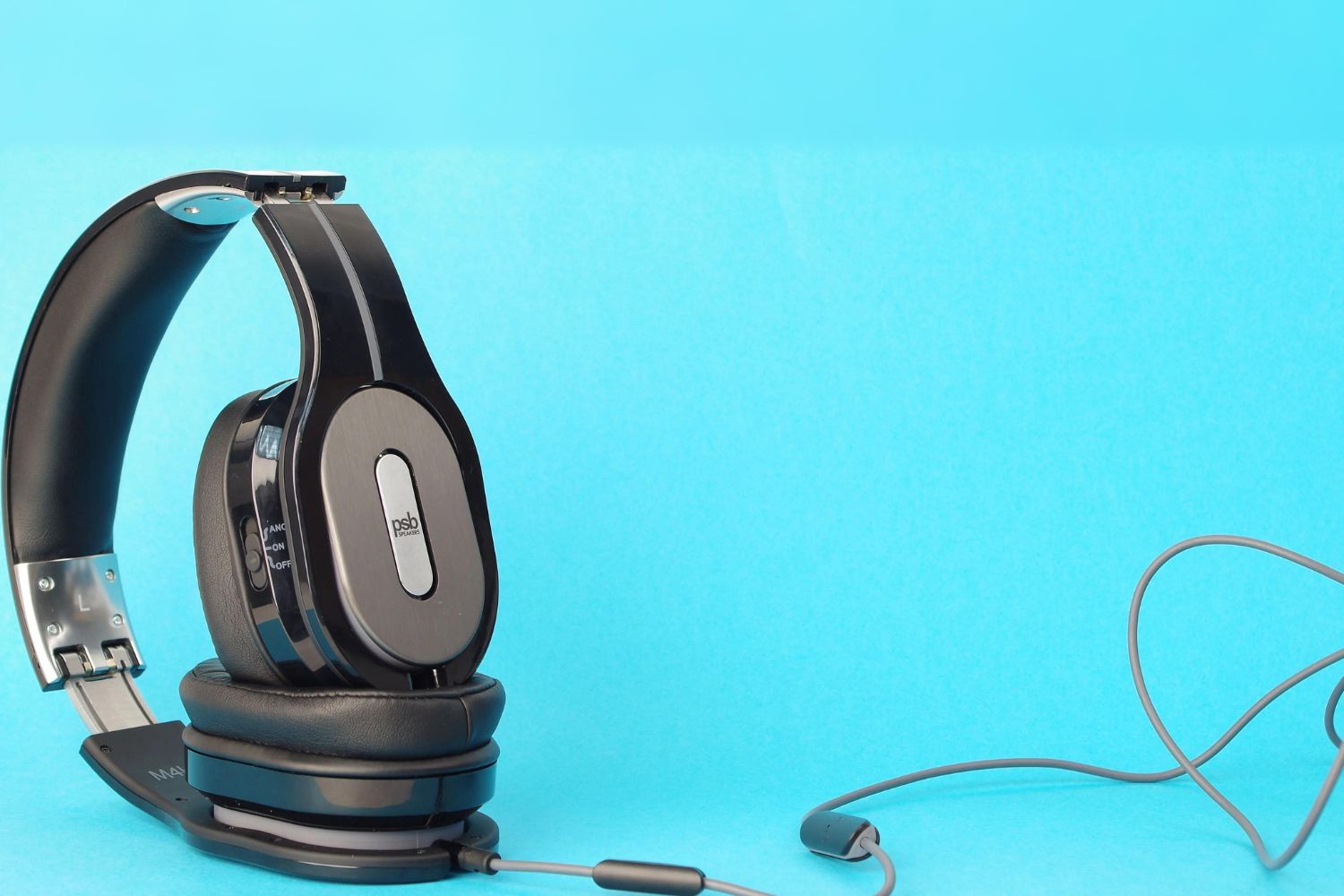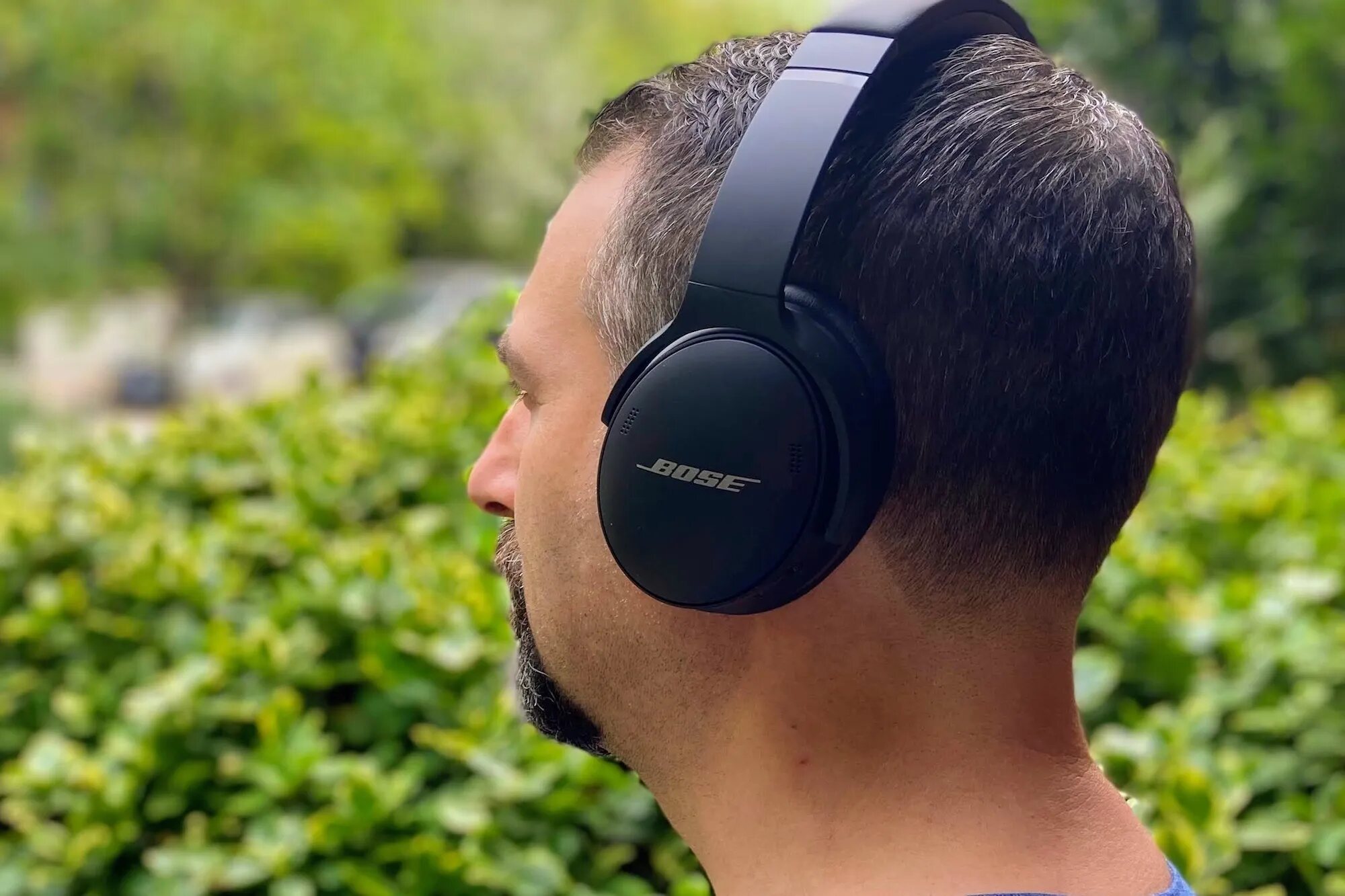Introduction
Noise can be a constant distraction in our daily lives, whether it’s the sounds of traffic, the bustling of a crowded café, or the hum of an airplane engine during a long flight. However, thanks to modern technology, we have a solution that can provide us with a peaceful auditory experience: noise cancelling headphones. These innovative devices use advanced techniques to minimize or eliminate external noise, allowing us to immerse ourselves in our own world of music, podcasts, or simply silence.
But have you ever wondered how noise cancelling headphones actually work? In this article, we will explore the fascinating world of wave behavior and delve into the mechanisms behind noise cancellation. We will dive into the concept of active noise cancellation and understand the underlying principles of destructive interference. Furthermore, we will discuss the role of microphones and the challenges that arise in the process of noise cancellation.
By gaining insight into the technologies used in noise cancelling headphones, we can better appreciate the benefits they offer and make informed decisions when choosing the best pair for our needs. So, whether you’re a frequent traveller seeking peace during long flights or someone who simply wants to focus in a noisy environment, this article will provide you with a deeper understanding of the wave behavior employed by noise cancelling headphones.
How do noise cancelling headphones work?
Noise cancelling headphones utilize a fascinating technology known as active noise cancellation to reduce or eliminate external sounds. Unlike regular headphones, which simply block out noise by physically covering the ears, noise cancelling headphones actively counteract unwanted sound waves through a process called destructive interference.
Understanding the behavior of sound waves is crucial to comprehending how noise cancellation works. Sound travels in the form of waves, with peaks and valleys that determine its frequency and amplitude. When external noise is present, such as the sound of an engine or chatter in a coffee shop, it produces its own set of waves. These waves interact with the sound waves produced by the headphones, resulting in a mixture of constructive and destructive interference.
Active noise cancellation works by first capturing the external noise using microphones embedded in the ear cups of the headphones. These microphones pick up the surrounding sounds and transmit them to a signal processing unit located inside the headphones. This unit analyzes the characteristics of the incoming sound waves and generates a corresponding “anti-noise” signal.
The “anti-noise” signal is then fed into the headphones’ speakers, which emit the sound waves that are 180 degrees out of phase with the incoming external noise waves. This phase difference causes the two sets of waves to collide and cancel each other out in a process called destructive interference. As a result, the unwanted noise is significantly reduced or eliminated, allowing the listener to enjoy a much quieter environment.
It’s worth noting that noise cancelling headphones work best for continuous, low-frequency sounds like the humming of an airplane engine or the rumble of a train. These constant sounds are easier to predict and counteract, allowing the headphones to effectively suppress them. However, sudden, loud noises or high-pitched sounds may still pass through the noise cancellation process to some extent, as they are more challenging to anticipate and cancel out completely.
By leveraging the principles of active noise cancellation, noise cancelling headphones provide a more immersive and enjoyable audio experience while minimizing distractions from the surrounding environment. Whether you’re on a long flight, studying in a noisy library, or simply wanting some peace and quiet, noise cancelling headphones can be a game-changer in providing a serene listening environment.
Understanding sound waves
To understand how noise cancelling headphones work, it’s essential to have a basic understanding of sound waves. Sound is a form of energy that travels through mediums such as air, water, or solids in the form of waves.
Sound waves consist of compressions and rarefactions. When a sound is produced, it creates vibrations that cause the air molecules to compress and move closer together, forming areas of high pressure known as compressions. These compressions then propagate through the air, creating a ripple effect where adjacent air molecules continue to compress and expand.
Conversely, in regions of the sound wave where the air molecules are less dense, the air molecules spread out, creating areas of low pressure known as rarefactions. This cycle of compressions and rarefactions continues as the sound wave travels through space.
The frequency of a sound wave determines its pitch, with higher frequencies resulting in higher-pitched sounds and lower frequencies producing lower-pitched sounds. The amplitude of a sound wave, on the other hand, determines its volume, with larger amplitudes corresponding to louder sounds.
When we listen to sound, our ears detect these waves and send electrical signals to our brain, which then interprets them as specific sounds. However, in a noisy environment, unwanted sounds can interfere with the sounds we actually want to hear, leading to decreased clarity and concentration.
Noise cancelling headphones tackle this issue by using the properties of sound waves to selectively block or diminish unwanted noise. By understanding how sound waves behave and how they can be manipulated, we can appreciate the ingenious design of noise cancelling headphones and the technology behind them.
What is active noise cancellation?
Active noise cancellation (ANC) is a technology utilized by noise cancelling headphones to actively reduce or eliminate unwanted external noise. Unlike passive noise isolation, which relies on physical barriers to block sound, active noise cancellation employs advanced algorithms and circuitry to actively counteract ambient noise.
The key principle behind active noise cancellation is the concept of destructive interference. When two sound waves of equal amplitude but opposite phases meet, they can cancel each other out, resulting in diminished or even no sound. This is achieved by generating an “anti-noise” signal that is 180 degrees out of phase with the unwanted external noise.
Active noise cancellation headphones achieve this by utilizing microphones embedded in the ear cups to capture the external noise. These microphones pick up the surrounding sounds, and the signals are then processed by a chip or circuitry within the headphones.
The processing unit analyzes the characteristics of the incoming sound waves, including their frequency and amplitude, and generates an “anti-noise” signal which is tailored to specifically counteract the external noise. This “anti-noise” signal is played back through the headphones’ speakers, effectively canceling out the unwanted sounds through destructive interference.
It’s important to note that active noise cancellation is most effective in reducing continuous, low-frequency sounds, such as the drone of an airplane engine or the hum of traffic. These types of sounds are more predictable and easier to counteract, allowing the headphones to effectively attenuate them.
However, active noise cancellation may have limitations when it comes to sudden, high-frequency sounds or unpredictable noises, as these can be more challenging to anticipate and cancel out completely. In such cases, the headphones may still provide some level of noise reduction, but the effectiveness might be reduced compared to continuous sounds.
Active noise cancellation technology has come a long way in recent years, and advancements in algorithms and hardware have greatly improved its effectiveness. Today, noise cancelling headphones can provide a significant reduction in ambient noise, allowing users to enjoy their audio content with enhanced clarity and without distractions.
In the next section, we will explore the concept of destructive interference in more detail and how it contributes to the effectiveness of noise cancellation.
The concept of destructive interference
To understand how noise cancellation works, it’s essential to grasp the concept of destructive interference. Destructive interference occurs when two waves meet and their combined amplitudes cancel each other out.
When two sound waves with equal amplitudes but opposite phases collide, the crests of one wave align with the troughs of the other wave. As a result, the positive and negative aspects of each wave effectively neutralize each other, leading to a reduction in overall amplitude.
This phenomenon is crucial in noise cancellation because it allows for the selective attenuation of unwanted external sounds. By generating an “anti-noise” wave that is out of phase with the ambient noise, noise cancelling headphones ensure that the peaks of the unwanted sound align with the troughs of the “anti-noise” wave. As a result, the amplitudes of the two waves cancel each other out, effectively diminishing the impact of the external noise.
Destructive interference is especially effective for continuous, low-frequency sounds. These types of sounds are more predictable and have longer wavelengths, making it easier for noise cancelling headphones to generate an “anti-noise” wave that accurately matches the characteristics of the ambient sound wave.
However, it’s important to note that destructive interference may have limitations when it comes to sudden, high-frequency sounds or sporadic noises. These types of sounds are less predictable, and their shorter wavelengths can make it more challenging for noise cancelling headphones to generate an “anti-noise” wave that perfectly aligns with the unwanted sound wave.
While noise cancelling headphones can still provide some reduction in these types of noises, it may not be as significant as for continuous sounds. This is why noise cancelling headphones are particularly effective in environments where there is consistent ambient noise, such as airplane cabins, train stations, or busy offices.
Understanding the concept of destructive interference allows us to appreciate the ingenuity behind noise cancelling headphones. By manipulating sound waves and utilizing advanced algorithms and hardware, these headphones can create a more serene and immersive listening experience, reducing the impact of external noise and allowing us to focus on the audio content we desire.
In the next section, we will delve into the algorithms used in noise cancellation and how they contribute to the overall effectiveness of noise cancelling headphones.
Noise cancellation algorithms
The effectiveness of noise cancelling headphones relies heavily on the algorithms used to generate the “anti-noise” signal. These algorithms play a crucial role in analyzing the incoming sound waves, determining their characteristics, and generating a corresponding “anti-noise” wave.
There are different types of noise cancellation algorithms employed in noise cancelling headphones, each with its own approach to attenuating unwanted sounds. One widely used algorithm is the feedforward algorithm, which relies on the microphones placed on the outside of the headphones to capture the external sound. The captured sound is then analyzed, and the appropriate “anti-noise” signal is generated and played back through the headphones’ speakers in real-time.
Another algorithm commonly used is the feedback algorithm, which employs microphones both on the outside and inside of the ear cups. The external microphones capture the ambient noise, while the internal microphones pick up the sound that has leaked into the ear cups. By analyzing these two signals, the feedback algorithm generates the “anti-noise” signal that cancels out the external noise effectively.
These algorithms are further enhanced by sophisticated signal processing techniques. Digital signal processing (DSP) is used to analyze and manipulate the sound waves in real-time. The algorithms take into account factors such as the frequency and amplitude of the external noise and adjust the “anti-noise” signal accordingly to match the characteristics of the unwanted sound.
Furthermore, adaptive algorithms are utilized to continually monitor and adapt to changes in the sound environment. This allows noise cancelling headphones to dynamically adjust the “anti-noise” signal based on the fluctuations in the ambient noise, ensuring optimal cancellation performance at all times.
It’s worth mentioning that noise cancelling algorithms are not without their limitations. They primarily excel in suppressing low-frequency, constant external noise, such as the droning sound of an airplane engine. However, they may have difficulties canceling out sudden, high-frequency sounds or irregular noises, as these can be harder to predict and counteract effectively.
Additionally, the quality and effectiveness of noise cancellation algorithms can vary between different models and brands of headphones. Manufacturers invest significant research and development efforts to enhance the performance of their algorithms and provide users with the best possible noise cancellation experience.
Overall, the use of advanced noise cancellation algorithms, combined with signal processing techniques, allows noise cancelling headphones to efficiently attenuate or eliminate unwanted external noise, creating a more immersive and enjoyable audio experience for users.
In the next section, we will explore the role of microphones in noise cancelling headphones and how they contribute to the noise cancellation process.
The role of microphones in noise cancelling headphones
Microphones play a vital role in the noise cancellation process of headphones. They serve as the ears of the headphones, capturing the external sounds that need to be countered or reduced. These microphones are strategically placed on the outside or inside of the ear cups to accurately capture the ambient noise and provide input for the noise cancellation algorithms.
External microphones, situated outside the ear cups, capture the surrounding sounds in the environment. These sounds can include traffic noise, conversations, or the hum of an airplane engine. The captured sound is then converted into electrical signals that are sent to the noise cancellation circuitry within the headphones.
The external microphones help the noise cancellation algorithms analyze the incoming sound waves, extracting relevant information such as their frequency and amplitude. This data is essential for generating the correct “anti-noise” signal that will cancel out the unwanted sound.
On the other hand, some noise cancelling headphones also incorporate internal microphones, placed inside the ear cups, to capture the sound that leaks into the headphones. When we wear headphones, some sound can still leak through small gaps. The internal microphones pick up this leaked sound and feed it back to the noise cancellation circuitry.
By incorporating both external and internal microphones, noise cancelling headphones can provide a more accurate representation of the ambient noise. The captured external sound, combined with the internal sound leakage, allows the noise cancellation algorithms to create a more precise “anti-noise” signal that aligns with the unwanted external noise.
The positioning and design of these microphones are essential to achieve optimal noise cancellation performance. Manufacturers carefully tune the microphone placement to ensure they capture the right sound while minimizing any interference or distortion that might impact the accuracy of the noise cancellation process.
It’s worth noting that the effectiveness of noise cancelling headphones can be influenced by factors such as the quality and sensitivity of the microphones. High-quality microphones with better frequency response and lower noise levels can provide more accurate input for the noise cancellation algorithms, leading to improved overall noise cancellation performance.
Microphones are instrumental in the noise cancellation process of headphones, enabling them to capture and analyze the external sound. By incorporating both external and internal microphones, manufacturers can fine-tune the noise cancellation algorithms to generate the appropriate “anti-noise” signal, effectively minimizing or eliminating the impact of unwanted external noise.
In the next section, we will discuss some of the challenges faced in the process of noise cancellation and how manufacturers tackle those obstacles.
The challenges of noise cancellation
While noise cancelling headphones can provide impressive results, they also face certain challenges in effectively canceling out unwanted external sounds. These challenges arise due to the nature of sound and the limitations of noise cancellation technology.
One of the primary challenges is dealing with sudden and impulsive sounds. Noise cancelling algorithms work best with continuous, low-frequency sounds that are predictable and can be anticipated. However, sudden loud noises, such as a clap or a door slamming, can be challenging to counteract effectively. The algorithms have less time to analyze and generate the appropriate “anti-noise” signal, leading to limited cancellation of such sounds.
High-frequency sounds also present a challenge for noise cancellation. The shorter wavelength of high-frequency sounds makes it harder to accurately predict and counteract using noise cancelling technology. While noise cancelling headphones can still provide some reduction in high-frequency noises, their effectiveness may be reduced compared to low-frequency sounds.
Another challenge is the potential for “leakage” of sound through gaps in the headphones. Noise cancelling headphones cover the ears, but there may still be small gaps where sound can enter or escape. This leakage can affect the overall effectiveness of noise cancellation, as some external noise may bypass the cancellation process. Manufacturers aim to minimize these gaps and improve the seal of the headphones to mitigate this issue.
Furthermore, the effectiveness of noise cancellation can be influenced by the noise cancellation circuitry and the quality of the components used. Some headphones may introduce electrical noise or distortions during the process, which can impact the overall sound quality and the accuracy of noise cancellation. Manufacturers invest in high-quality components and advanced circuitry design to minimize these drawbacks.
Battery life is also a consideration, as active noise cancellation requires power. The continuous operation of microphones and processing circuits consumes energy, leading to shorter battery life. Manufacturers strive to optimize power consumption to ensure reasonable battery life without compromising the performance of noise cancellation.
Lastly, individual differences and fit can impact the effectiveness of noise cancellation. The seal between the headphones and the ears plays a crucial role in minimizing external noise. Factors such as head shape, ear shape, and wearing glasses can affect the fit and the level of noise isolation achieved by the headphones. Manufacturers design their headphones to provide a secure and comfortable fit for a wide range of users, but individual variations can still impact noise cancellation performance.
Despite these challenges, noise cancelling headphones continue to evolve, and manufacturers are constantly working to overcome these obstacles. By improving algorithms, optimizing components, and considering individual differences, they strive to enhance the noise cancellation experience for users.
In the next section, we will explore the benefits of noise cancelling headphones and how they can enhance our listening experience in various situations.
The benefits of noise cancelling headphones
Noise cancelling headphones offer a multitude of benefits, making them a popular choice for many individuals seeking a more immersive and enjoyable audio experience. Let’s explore some of these benefits:
1. Enhanced Sound Quality: By reducing or eliminating external noise, noise cancelling headphones allow you to focus on the audio you want to hear, resulting in improved sound clarity and details. Whether you’re listening to music, watching movies, or even engaged in a phone call, you can enjoy a more immersive and high-fidelity audio experience.
2. Reduced Distractions: Whether you’re studying, working, or simply trying to relax, external noises can be significant distractions. Noise cancelling headphones create a cocoon of serenity, effectively muting the sounds of traffic, chatter, or other disturbances in your environment. This enables you to concentrate better, boost productivity, and find solace in a busy world.
3. Travel Comfort: The constant noise of engines, announcements, and fellow passengers can be overwhelming during travel. Noise cancelling headphones provide a sanctuary of tranquility, allowing you to enjoy a peaceful journey. Whether you’re on a flight, train, or bus, noise cancelling headphones can alleviate the stress and fatigue associated with travel.
4. Health and Well-being: Exposure to loud or continuous noise for extended periods can have negative effects on our health. Noise cancelling headphones can help protect your hearing by reducing exposure to loud sounds. Moreover, by minimizing the need to increase the volume to drown out background noise, they can potentially prevent long-term damage to your ears.
5. Improved Sleep: Noise can disrupt sleep and affect its quality. Whether it’s neighbors, snoring partners, or a noisy street, external sounds can interrupt your sleep patterns. Noise cancelling headphones can create a peaceful sleep environment by blocking out or reducing disturbances, allowing for a more restful and rejuvenating sleep experience.
6. Versatile Usage: Noise cancelling headphones are not limited to specific situations. They can be used in various settings, such as offices, coffee shops, libraries, or even at home. Their practicality extends beyond audio enjoyment, as they provide an efficient solution for reducing unwanted noise in any environment.
7. Preserving Battery Life: Noise cancelling headphones can also extend the battery life of portable devices. When used in noisy surroundings, the constant need to increase the volume can drain the battery quickly. With noise cancellation, the ambient noise is filtered out, allowing you to listen at lower volumes, thus conserving the battery of your device.
Overall, noise cancelling headphones offer a range of benefits, enhancing the way we listen and interact with audio content while providing a sanctuary from external noise. Whether you’re a frequent traveler seeking tranquility, a student looking to concentrate, or an audiophile desiring immersive sound quality, noise cancelling headphones are a valuable tool that enriches our auditory experiences in numerous ways.
Conclusion
Noise cancelling headphones have revolutionized the way we listen to audio in noisy environments. By utilizing advanced technologies, such as active noise cancellation and sophisticated algorithms, these headphones have the ability to reduce or even eliminate unwanted external sounds, providing a more immersive and enjoyable listening experience.
We have explored the concept of destructive interference and how noise cancelling headphones leverage this principle to counteract external noise. The role of microphones in capturing the ambient sound and the challenges faced in noise cancellation have also been discussed. Additionally, we delved into the benefits of noise cancelling headphones, including enhanced sound quality, reduced distractions, travel comfort, improved sleep, health benefits, versatility, and preservation of battery life.
However, it’s important to acknowledge that noise cancelling headphones may not completely eliminate all external sounds, especially sudden, loud noises or high-frequency sounds. The effectiveness of noise cancellation can vary depending on the specific model, the quality of the components, and individual factors such as fit and environment.
Ultimately, noise cancelling headphones offer a significant improvement in our audio experiences, allowing us to focus on the sounds we desire while minimizing distractions from the surrounding environment. Whether we’re listening to music, engaging in phone calls, or seeking tranquility during travel or work, noise cancelling headphones provide a valuable solution to enhance our auditory enjoyment and well-being.
As technology continues to advance, we can expect further improvements in noise cancellation technology, making these headphones even more effective and versatile. With ongoing research and development, the future of noise cancelling headphones holds exciting possibilities for creating immersive and personalized audio experiences.
So, whether you’re a music lover, a frequent traveler, or someone who simply wants to find peace in a noisy world, noise cancelling headphones are an essential tool that can help you create your own sonic sanctuary.







